NAVYPEDIA
 Support the project with paypal
Support the project with paypal
Ships
| Name | No | Yard No | Builder | Laid down | Launched | Comp | Fate |
|---|---|---|---|---|---|---|---|
| Javarí | Vickers, Barrow, UK | 24.8.1912 | 17.6.1913 | 11.1913 // 8.1914 | never commissioned, transferred to United Kingdom (Humber) | ||
| Solimões | Vickers, Barrow, UK | 24.8.1912 | 19.8.1913 | 1.1914 // 8.1914 | never commissioned, transferred to United Kingdom (Severn) | ||
| Madeira | Vickers, Barrow, UK | 24.8.1912 | 30.9.1913 | 2.1914 // 8.1914 | never commissioned, transferred to United Kingdom (Mersey) |
Technical data
| Displacement normal, t | 1260 |
|---|---|
| Displacement full, t | 1520 |
| Length, m | 81.3 |
| Breadth, m | 14.9 |
| Draught, m | 1.70 deep |
| No of shafts | 2 |
| Machinery | 2 VTE, 2 boilers |
| Power, h. p. | 1450 |
| Max speed, kts | 9.5 |
| Fuel, t | coal 187 + oil 90 |
| Endurance, nm(kts) | 4000(8) |
| Armour, mm | belt: 76 - 38, bulkheads: 38, barbette: 89, turret face: 102 |
| Armament | 1 x 2 - 152/50 Vickers R, 2 x 1 - 120/18 Mk I howitzers, 4 x 1 - 47/50 3pdr Vickers, 6 x 1 - 7.7/87 |
| Complement | 140 |
Standard scale images

Humber 1913
Project history
Three small river monitors had been ordered by Brazil from Vickers in January 1912, and the first, Javary, had started trials in October 1913. All three were ready by February 1914, but by this time the Brazilian Navy could not afford to pay for them and they were laid up in the Devonshire Dock at Barrow awaiting a buyer. Just before the outbreak of war the Admiralty made arrangements to buy them for £155,000 each to prevent them from falling into enemy hands, and they were formally taken over on 3 August 1914. Although nominally capable of 12kts none of them achieved double figures in RN service, although Javary had reached 11.5kts in 1913. They were totally unsuited to operate in the open sea, as their shallow draught permitted them to be blown sideways.
Protection
Machinery and magazine were protected by 76-38mm belt and 38mm bulkheads.
 HOME
HOME FIGHTING SHIPS OF THE WORLD
FIGHTING SHIPS OF THE WORLD BRAZIL
BRAZIL OTHER FIGHTING SHIPS
OTHER FIGHTING SHIPS JAVARÍ river monitors
JAVARÍ river monitors
